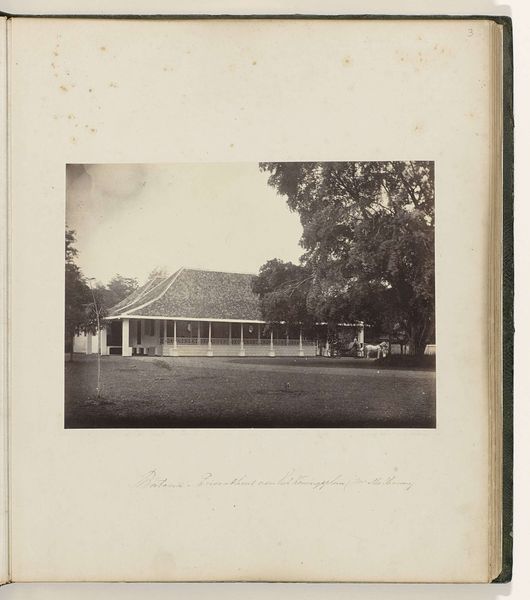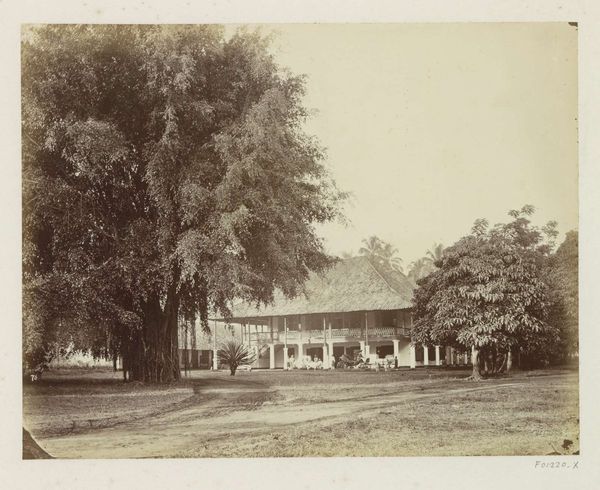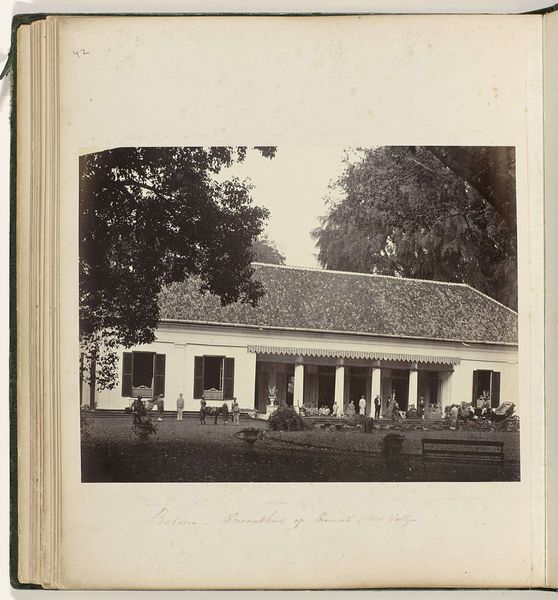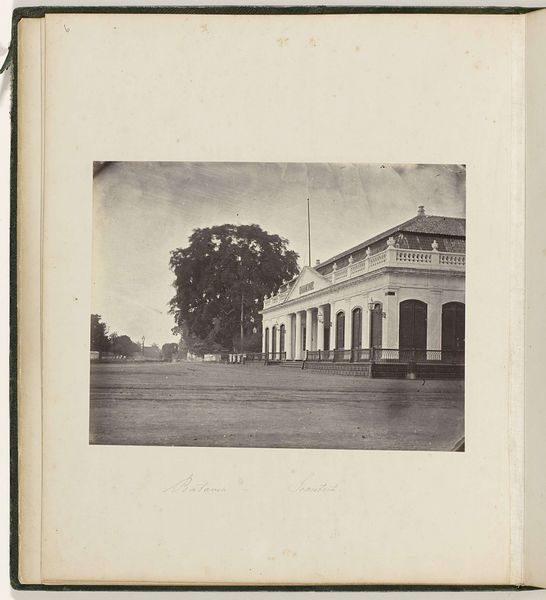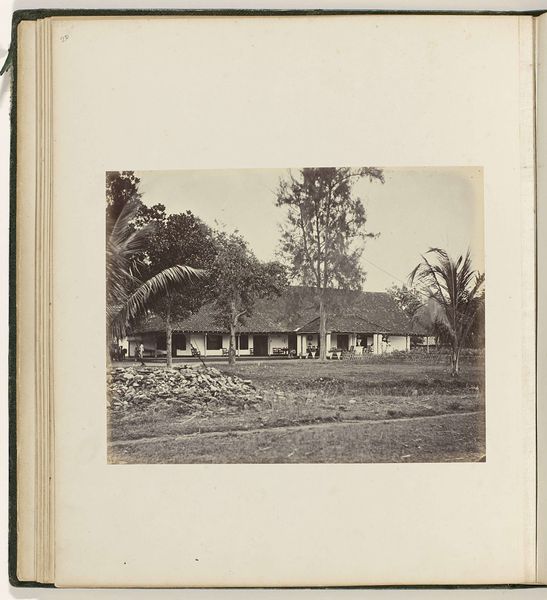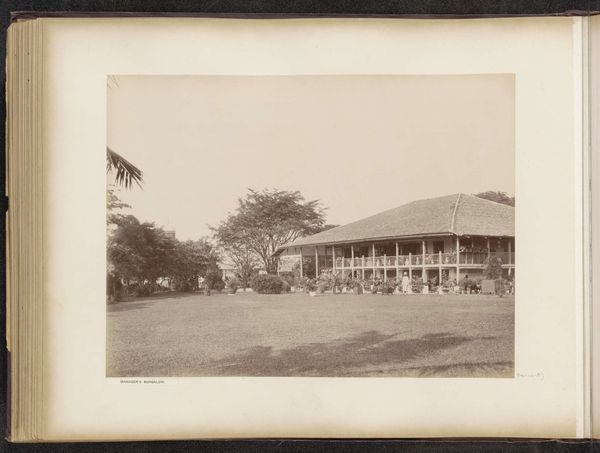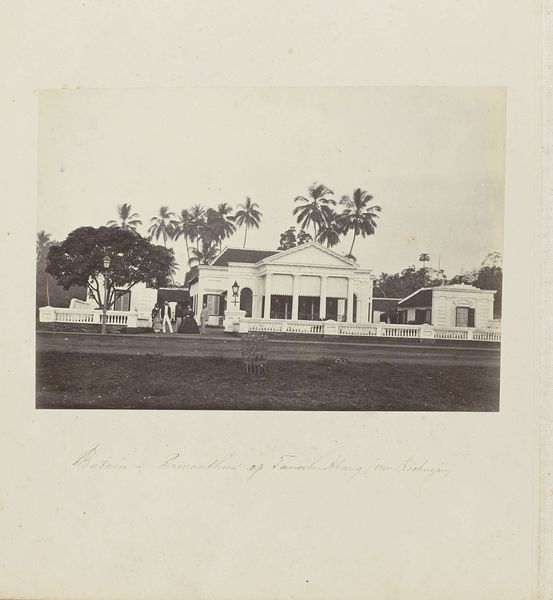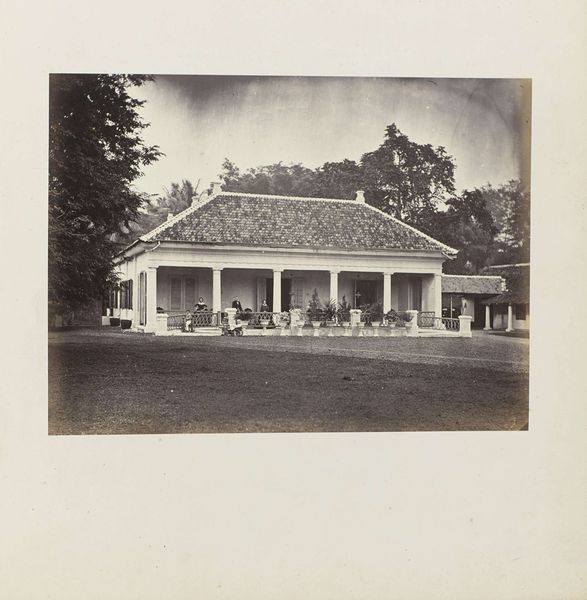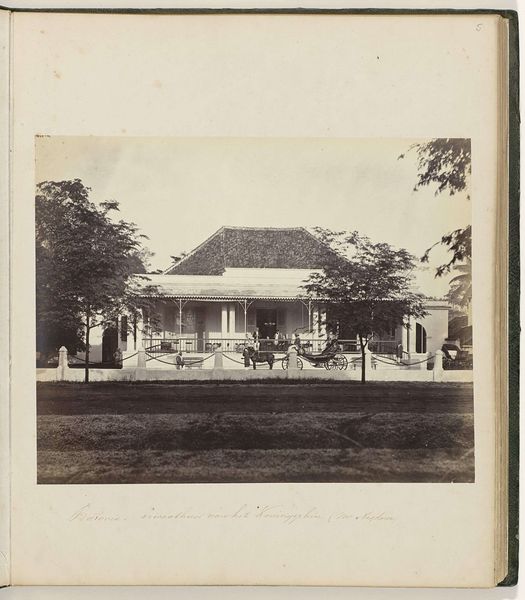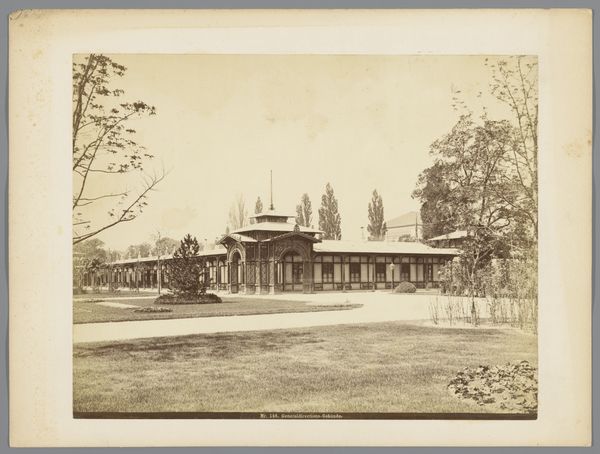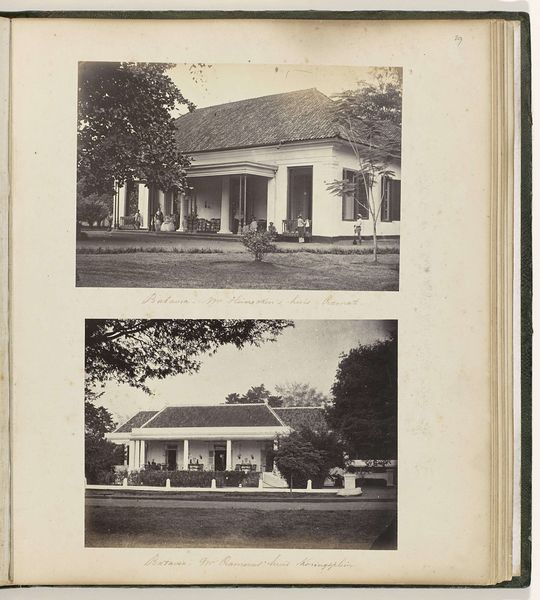
photography, albumen-print, architecture
#
muted colour palette
#
photo restoration
#
landscape
#
photography
#
orientalism
#
albumen-print
#
architecture
Dimensions: height 234 mm, width 287 mm
Copyright: Rijks Museum: Open Domain
Editor: This is a photograph entitled "Batavia - Gymnasie Willem III Salemba," taken sometime between 1863 and 1866 by Woodbury & Page. It’s an albumen print and captures the architecture of the school, but what strikes me most is the stillness and formality. What do you see in this piece? Curator: That stillness is palpable, isn't it? This image, like many from the period, operates on several symbolic levels. We're seeing colonial architecture presented almost clinically, but consider what "Gymnasie Willem III" would have represented: the imposition of European education, a very specific kind of knowledge, onto this landscape. Editor: So, the building itself is a symbol? Curator: Precisely. The clean lines and ordered composition reflect a desire to impose order, a Western ideal of rational space, on what colonizers often perceived as chaotic or uncivilized landscapes. But consider also the choice of photography itself. What power did the ability to capture and disseminate images hold? Editor: It allowed them to create a record, almost like a visual inventory of their dominion. To solidify a perspective. Curator: Exactly. And notice how nature itself—the trees, the expansive lawn—seems meticulously manicured, domesticated even. It all contributes to the overall message. Are you getting a sense of it? Editor: Yes. It is very subtle but gives some weight to that sense of cultural dominance. Thanks! Curator: It was my pleasure! It makes you consider what symbols do over time, doesn't it?
Comments
No comments
Be the first to comment and join the conversation on the ultimate creative platform.

